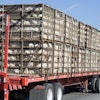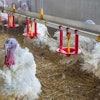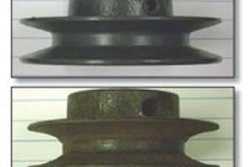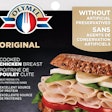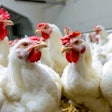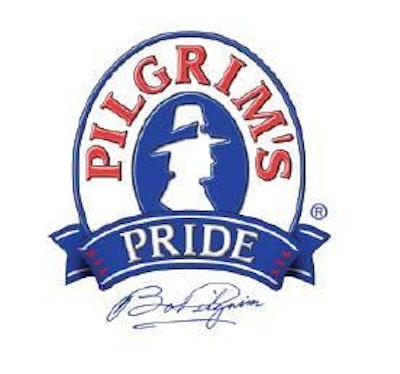
As recently as August 13, 2008, Pilgrim's Pride Corporation (PPC) was designated as Lehman Brothers' top agribusiness pick for investors. Less than four months later, PPC filed for Chapter 11 bankruptcy protection on December 1. Seemingly, just about everything that could go wrong for PPC this autumn did go wrong, but some of the company's problems started before August 2008.
Gold Kist acquisition
Leverage is fine in a strong economy. Unfortunately, the downside of leverage is that losses are magnified in a weak economy. That makes increased leverage a risky strategy. PPC became highly leveraged in 2006, when it purchased Gold Kist. As a result of the purchase, long-term debt increased from $555 million to $1.3 billion. The balance sheet also contained $500 million for "goodwill." Goodwill is accounting lingo for, "there is no other way to account for what was paid for this purchase."
The positive aspect of the Gold Kist purchase was the increase in sales. From $5 billion in 2006, sales increased to $7.5 billion in 2007, thanks to the Gold Kist purchase. If PPC could have sold a higher volume of chicken at a profit, it could have paid off the debt and the goodwill over time. However, everything had to go right for the strategy to work. In 2008, everything went very wrong.
Record high grain prices
Grain prices soared to new highs in the summer of 2008. PPC did not speculate with grain futures prior to 2008 and accepted the short-term losses that come with sudden spikes in grain prices. Grain futures were only allowed in those instances when the future price of chicken was set by contract. This was a policy that was defended strongly by the late O.B. Goolsby, Jr., who, unfortunately, was not around this year to insist on that policy when it was most needed.
The time of greatest need for the non-speculating policy was last summer, when corn prices were at record high levels. Alas, PPC could not resist the temptation and speculated at close to the highest price ever for corn. That decision caused an additional $100 million loss at the worst possible moment. This self-inflicted wound seems inexplicable with hindsight, but did have at least one shred of logic. The decision to speculate was probably based on the near certainty of a smaller-than-normal U.S. corn harvest.
As it turned out, an enormous world wheat harvest and the sudden fall in the demand for corn rendered the smaller-than-normal U.S. corn harvest meaningless. With perfect hindsight, if a wild riverboat gamble had to be taken at the height of the corn market, a better bet would have been to sell corn futures rather than to buy them. That would have taken both unusual grain market insight and extreme intestinal fortitude.
Grain market insight was not totally absent in the poultry industry. In stark contrast to the wrong-way panic speculation of PPC near the top of the market, Joe Frank Sanderson, Jr., in one of the most prudent statements about corn markets made last year by anyone, said that he would not hedge high-priced corn. He calculated that the extremely high price of corn would, one way or the other, lead to a lower price of corn because buyers simply would not be able to afford corn at that price. His blazingly-clear reasoning turned out to be correct. Sanderson did not hedge, and the value of corn fell.
Lehman Brothers' analysis
One artifact of 2008 in the financial markets stands out as emblematic of the miscalculations that can be made by people as they attempt to understand and predict the market. The artifact in question was a report published on August 13, 2008, by Christopher Bledsoe of the late and lamented Lehman Brothers. The report designated PPC to be Lehman's top pick within the agribusiness space.
With 20/20 hindsight, there were two errors in the Lehman analysis. First, investors should have run away from investments in agribusiness on August 13. That was the last opportunity to get out before the bottom fell out of agribusiness firms like PPC (down 99%), Bunge (down 70%), ADM (down 50%) and Monsanto (down 40%). The best advice on August 13 would have been, sell everything!
The second error was to single out PPC as the best choice within the agribusiness sector. The report envisioned chicken profitability over the near- to intermediate-term due to production cuts that were already in place on August 13. Unfortunately, the meager cuts in place in August were overwhelmed by a general collapse in demand for all meats (and demand for everything). The target price for PPC was set at $38 per share within nine months. In the next four months after the report was published, PPC dropped to something close to zero, and, of course, Lehman disappeared forever in bankruptcy. To be fair to the analysts at Lehman, very few people made a correct prediction on the seriousness of the economic chaos caused by the near-meltdown of the financial system. In addition, it was not known at that point that PPC had made a significant bet on the price of corn remaining high, or that the Russians were going to significantly reduce their purchases of U.S. chicken.
What was known on August 13 was that the balance sheet of PPC was highly leveraged; PPC had a lot of debt compared to equity. Comparing PPC with Tyson and Sanderson Farms in 2007, the entire spectrum of risk can be observed, with PPC the riskiest, Tyson much lower risk and Sanderson with an unusually small amount of risk due to leverage.
Economic slowdown and reduced demand
The free-fall in the world economy caused a reduction in demand for chicken meat not only in the U.S. but around the world, and in particular for U.S. leg quarters. Russia, the largest customer for U.S. leg quarters, decided to reduce the amount of chicken it purchased from the U.S. by a significant amount, starting in 2009. The weaker world economy and news of reduced Russian demand caused the price of leg quarters to drop 50% this past fall. That was the final nail in the PPC shareholder coffin. With the credit market nearly frozen, Chapter 11 turned out to be the only viable way to save the company.
What happens next?
PPC is now a trustee to its creditors. It is also subject to the oversight and jurisdiction of the bankruptcy court. The shareholders no longer own the company but rather are creditors last in line, behind all other creditors. Everyone is now a creditor plaintiffs, employees, banks, growers and shareholders. Creditors are entitled to be heard by the court, which is responsible for determining whether or not the plan of reorganization complies with the bankruptcy law and provides fair treatment to all parties. There is an automatic stay that requires all creditors to cease collection attempts.
There is every expectation that PPC as a company will survive the process. However, what will happen to the company during reorganization is now a matter of speculation. It is possible that some plants may close. Even before Chapter 11, PPC had been closing some plants and consolidating operations. That process may now accelerate. It is also possible that some plants or complexes could be sold. In Chapter 11, the court requires a reorganization plan within 120 days.
The company's operations are expected to continue as normal while a reorganization plan is devised. On December 3, PPC received interim approval to access $365 million of its $450 million debtor-in-possession (DIP) financing facility arranged by Bank of Montreal as lead agent. The financing and the stay on collections should be enough to carry the company through to a future reorganized, leaner and more efficient PPC, which will exist in a better economic climate.
The Bank of Montreal will, of course, be first in line as a creditor. Last in line are current shareholders. In the vast majority of Chapter 11 cases, shareholders receive nothing. If that is the case, about $3 billion in shareholder value has disappeared. If PPC is like other Chapter 11 bankruptcies, new shares will be issued but the owners of the new shares will be those who held bonds, not stock, in the old PPC. Despite this bleak outlook, shareholders should not lose hope. There have been some cases where shareholders have emerged from Chapter 11 with something. For those who still own shares of PPC, the ticker symbol is now PGPDQ.PK, on what is called the pink sheets. As of the writing of this article, the shares still had a minimal value.

